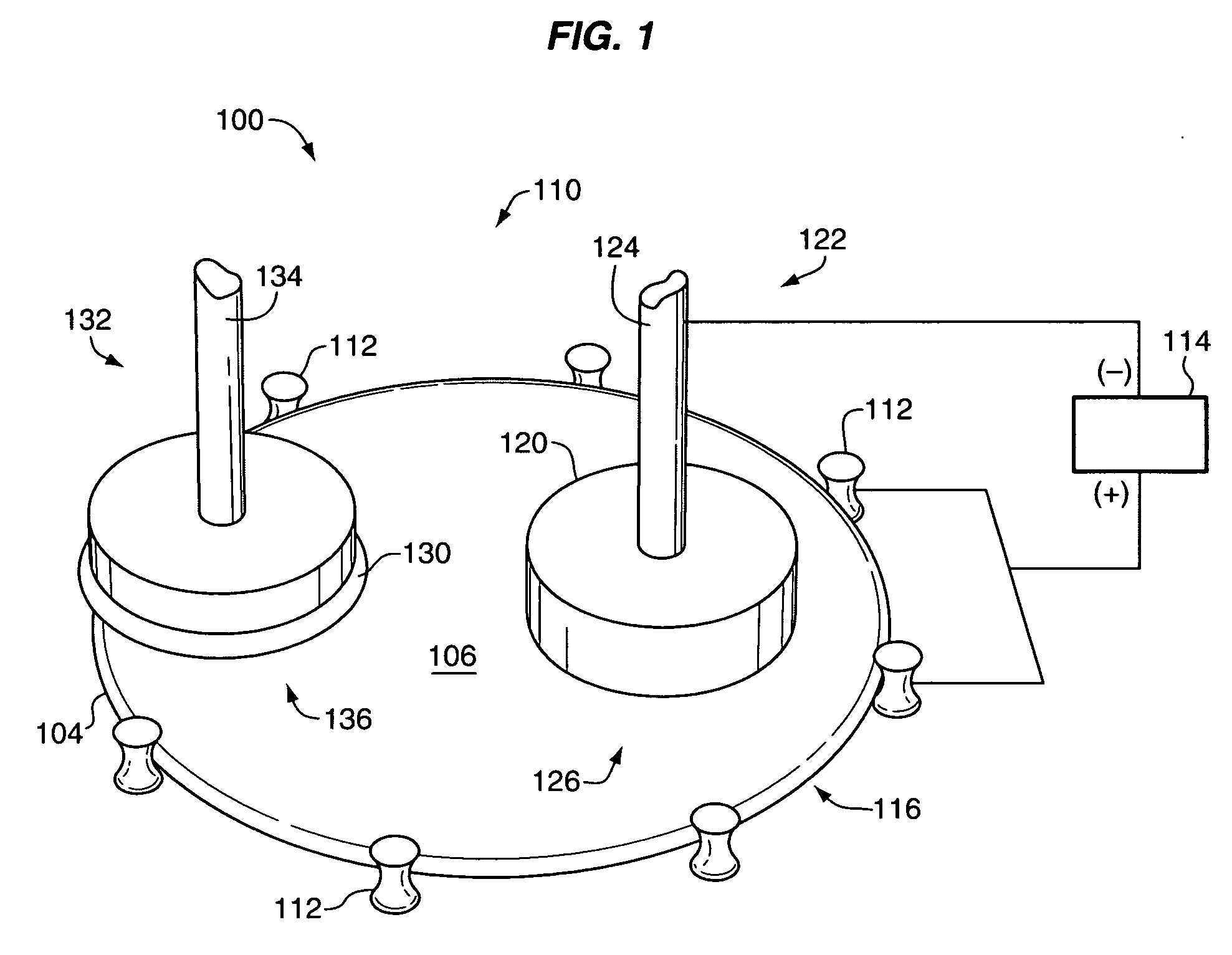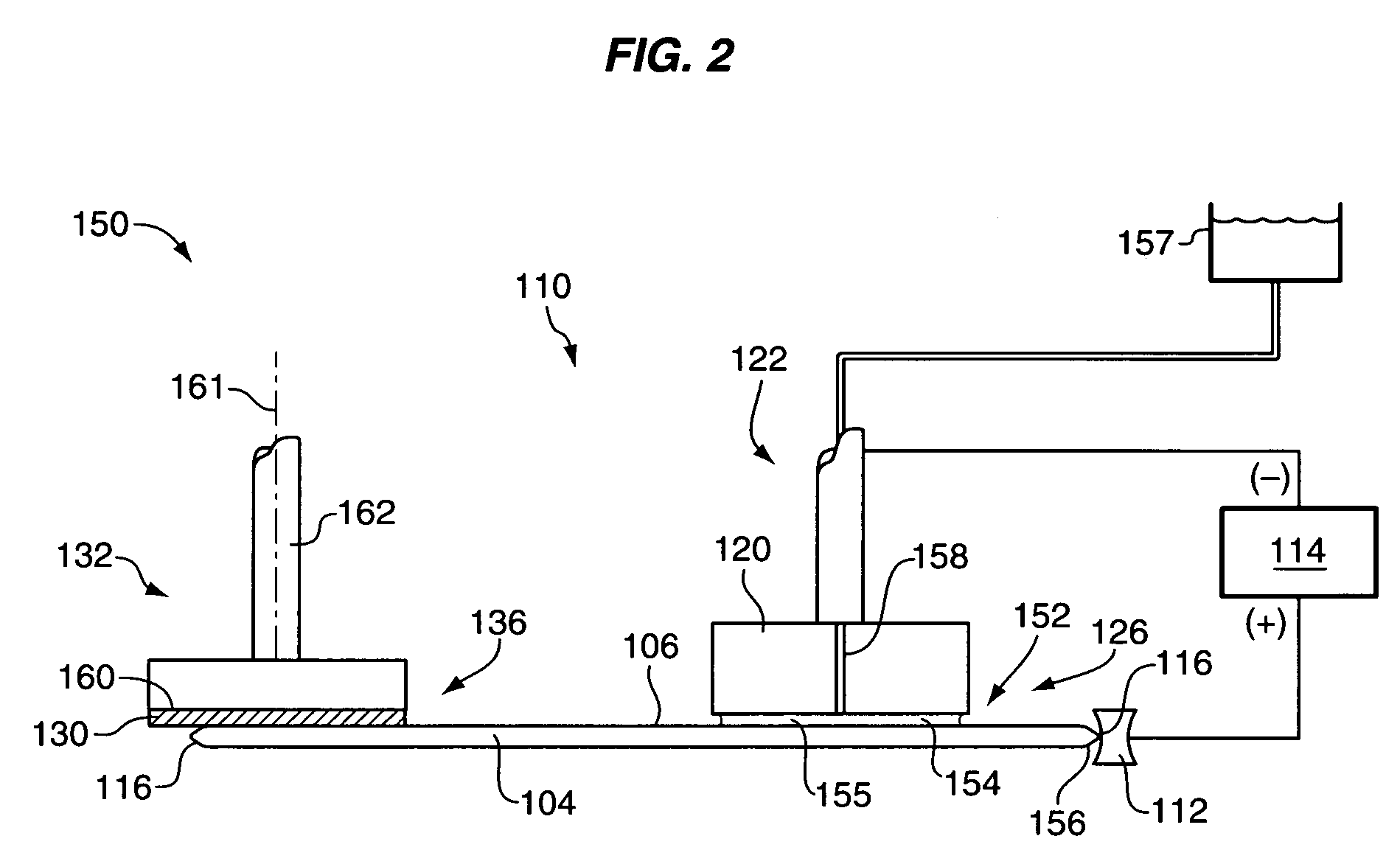Pad-assisted electropolishing
a technology of electropolishing and metal-containing surfaces, applied in the field of integrated circuit fabrication, can solve the problems of forming concave or depressions, affecting the quality of the surface of the metal and the dielectric surface, and damaging the fragile low-k dielectric surface, so as to avoid etching, erosion, and other damage to the metal and dielectric surface. , the effect of avoiding etching
- Summary
- Abstract
- Description
- Claims
- Application Information
AI Technical Summary
Benefits of technology
Problems solved by technology
Method used
Image
Examples
Embodiment Construction
[0053]The invention is described herein with reference to FIGS. 1-22. It should be understood that the structures and systems depicted schematically in FIGS. 1-11, 13-21 serve explanatory purposes and are not precise depictions of actual structures and systems in accordance with the invention. For example, the depiction of power supplies and fluid handling in the figures below likely is different from hardware in actual embodiments. Furthermore, the embodiments described herein are exemplary and are not intended to limit the scope of the invention, which is defined in the claims below. For the sake of clarity, parts and elements of various embodiments having similar structure and function are identified using the same reference numerals in the figures below.
[0054]In this specification, terms of orientation, such as “face-up”, “above”, “below”, “up”, “down”, “top”, “bottom”, and “vertical” used to describe embodiments relate to the relative directions in FIGS. 1-11, and 13-21, in whi...
PUM
| Property | Measurement | Unit |
|---|---|---|
| time | aaaaa | aaaaa |
| time period | aaaaa | aaaaa |
| thickness | aaaaa | aaaaa |
Abstract
Description
Claims
Application Information
 Login to View More
Login to View More - R&D
- Intellectual Property
- Life Sciences
- Materials
- Tech Scout
- Unparalleled Data Quality
- Higher Quality Content
- 60% Fewer Hallucinations
Browse by: Latest US Patents, China's latest patents, Technical Efficacy Thesaurus, Application Domain, Technology Topic, Popular Technical Reports.
© 2025 PatSnap. All rights reserved.Legal|Privacy policy|Modern Slavery Act Transparency Statement|Sitemap|About US| Contact US: help@patsnap.com



